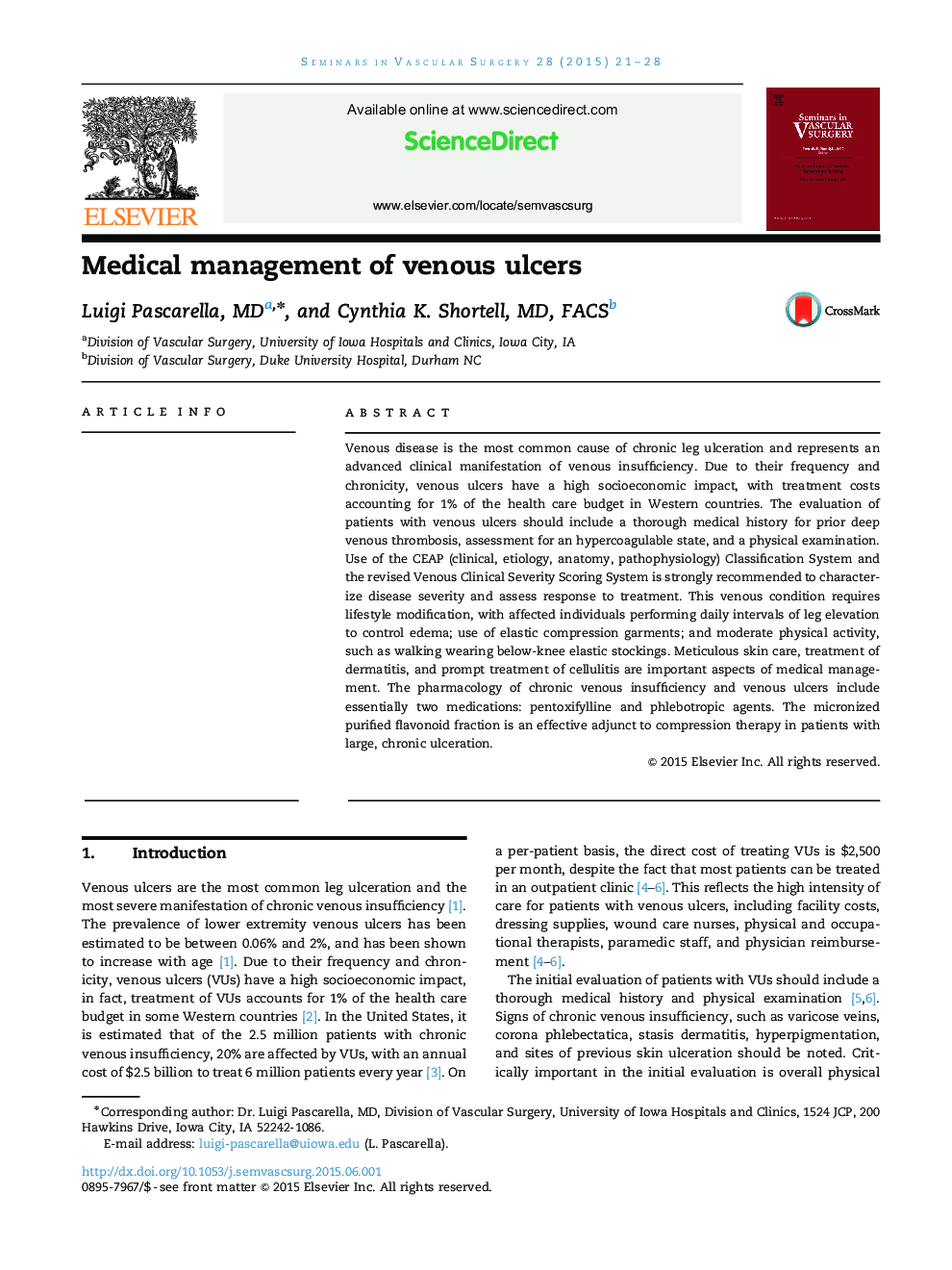| Article ID | Journal | Published Year | Pages | File Type |
|---|---|---|---|---|
| 3026127 | Seminars in Vascular Surgery | 2015 | 8 Pages |
Venous disease is the most common cause of chronic leg ulceration and represents an advanced clinical manifestation of venous insufficiency. Due to their frequency and chronicity, venous ulcers have a high socioeconomic impact, with treatment costs accounting for 1% of the health care budget in Western countries. The evaluation of patients with venous ulcers should include a thorough medical history for prior deep venous thrombosis, assessment for an hypercoagulable state, and a physical examination. Use of the CEAP (clinical, etiology, anatomy, pathophysiology) Classification System and the revised Venous Clinical Severity Scoring System is strongly recommended to characterize disease severity and assess response to treatment. This venous condition requires lifestyle modification, with affected individuals performing daily intervals of leg elevation to control edema; use of elastic compression garments; and moderate physical activity, such as walking wearing below-knee elastic stockings. Meticulous skin care, treatment of dermatitis, and prompt treatment of cellulitis are important aspects of medical management. The pharmacology of chronic venous insufficiency and venous ulcers include essentially two medications: pentoxifylline and phlebotropic agents. The micronized purified flavonoid fraction is an effective adjunct to compression therapy in patients with large, chronic ulceration.
